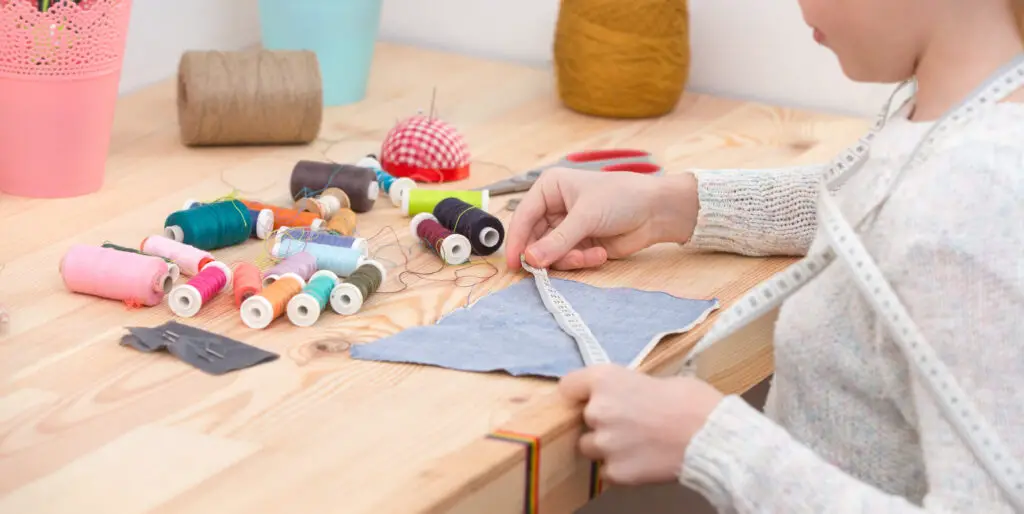
If you’ve enjoyed learning to sew and discovered what a useful skill it can be, you’ll want to pass on your skills to your children.
Starting Out
It’s never too soon to get your kids interested in sewing, and you can start when they’re just babies. For an infant, the most important sense is touch, and encountering lots of different types of fabric, with different textures, will help their general development as well as make clothing and household furnishings more appealing. Stuffed toys are a good place to start, but loose scraps of fabric (too big to swallow) can also provide a fun learning experience.
Children learn from watching adults, so make sure your child sees you sew. Children are often fascinated by repairs and seeing how damaged things can be put back together will help them to develop a practical approach to life.
Trips to the sewing supply shop provide a great opportunity to get children involved. Even before they’re ready to try sewing for themselves, they’ll often enjoy helping you select fabrics, threads and accessories. Assure them that their input is useful and they’ll start to understand how much fun sewing can be.
Early experiments
As children get older, they want to experiment with what they’ve seen. Of course, you won’t want to give them sharp pins and needles straight away, so a good place to start is with large, blunt needles, doing raffia work or embroidery on pre-punctured fabric. Needles like this are easier for children’s hands to hold anyway, so they’ll help them to build confidence.
At this stage, it’s best to concentrate on a few very basic skills like tacking or cross-stitch. These can be used in embroidery to create simple pictures, giving your children a sense of achievement. Choose a bright coloured thread that’s thick enough for them to handle easily. As their skills develop, you can move on to using finer needles and teaching skills like hand-stitching buttons.
It’s difficult for children to apply themselves to time-consuming projects like making their own clothes. Don’t put too much pressure on them to be patient, as this will naturally become easier for them as they grow up. Instead, try encouraging them to make smaller items such as clothes for stuffed toys and dolls to wear. Making placemats or embroidering handkerchiefs will help them feel useful to the family without being too much effort.
Boys sometimes lose interest in sewing due to pressure from schoolmates who tell them it’s sissy. If you want to keep your son’s interested, try to find them suitably masculine sewing tasks to do, such as helping to repair boots or making simple bags for carrying tools.
Introducing sewing machines
Learning to use a sewing machine can be tricky enough for an adult, and it presents further challenges for a child, as many machines require larger hands or feet that reach the floor when seated on a normal-sized chair. For safety reasons you should wait until your children are not only mature enough but also physically big enough before you introduce them to your machine.
In the first few months of learning, sewing machine use should always be closely supervised. Rather than rushing straight into it, you can ask your children to help you with tasks like threading and choosing stitch types. This will help to develop their skills and give them a sense of the machine’s potential before they actually start using it, reducing the risk of accidents.
Machine sewing makes it much easier to take on larger projects, so this is the stage at which you can encourage your children to think about making clothes. A good way to do this is to offer to supply sewing materials for free when you’re unwilling to buy them all the finished clothing they want. This will encourage them to try creating things themselves. With the right help and support, they’ll be well on their way to acquiring lasting sewing skills.
